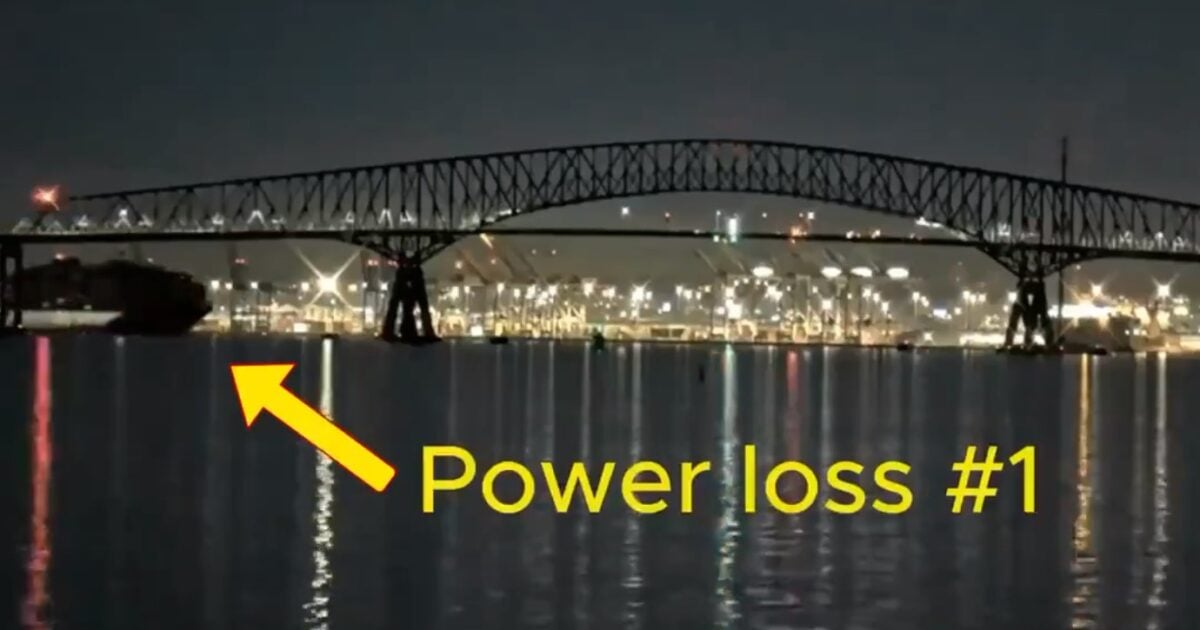The Baltimore Bridge Collapse: A Harrowing Incident
The alarming incident involving the Singaporean-flagged cargo vessel, the Dali, colliding with the Francis Scott Key Bridge in Baltimore has left many in shock. The video footage of this tragic event showcases the ship’s lights flickering, indicating a loss of power moments before the collision. Moreover, the sight of black smoke emanating from the vessel’s exhaust vents suggests the crew’s attempts to reignite the diesel engines.
Tragic Loss and Impact
Regrettably, eight construction workers were present on the bridge when it collapsed, with only two individuals rescued from the wreckage. Given the frigid temperatures of the Patapsco River, the remaining individuals are presumed to have succumbed to the disaster. Additionally, several vehicles were on the bridge at the time of the collapse, further intensifying the tragedy.
The ship had issued a distress call before the collision, prompting Maryland Transportation authorities to halt traffic on the bridge, potentially saving numerous lives. However, questions arise regarding the ship’s failure to drop anchor upon losing power, a standard procedure in restricted maneuvering conditions. Adhering to protocol could have potentially averted this catastrophe.
Port Closure and Economic Ramifications
As a consequence of the bridge collapse, the port of Baltimore has been shut down. This port, which handled 52.3 million tons of international cargo valued at approximately $80.8 billion in 2023, plays a crucial role in the regional economy. With over 15,000 direct jobs and more than 139,000 indirect jobs supported by the port, its closure has significant repercussions.
In 2021, the port of Baltimore ranked as the 17th largest port in the nation based on total tons handled, as per the Bureau of Transportation Statistics. Notably, the port was a major importer of trucks and light vehicles in 2023, receiving around 750,000 vehicles. Furthermore, the Francis Scott Key Bridge witnesses an estimated 12.4 million vehicles crossing annually, highlighting its vital transportation role.
Call to Action and Safety Measures
In the wake of this disaster, it is imperative to reassess safety protocols and strengthen maritime regulations. The incident underscores the need for stringent adherence to navigation guidelines and emergency procedures. The U.S. Coast Guard must prioritize the security of American ports, safeguarding them against potential threats, even if it means disrupting commercial activities.
As a strategic imperative, the Secretary of Transportation must ensure that all vessels entering U.S. ports are adequately manned and compliant with established protocols. Formalizing safety protocols into legislation and enhancing oversight mechanisms are essential steps to prevent similar incidents in the future.
The collapse of the Francis Scott Key Bridge serves as a cautionary tale, emphasizing the vulnerability of critical infrastructure and the imperative of proactive risk mitigation. By prioritizing safety and regulatory compliance, we can avert potential catastrophes and fortify the resilience of our nation’s maritime operations.
Image/Photo credit: source url





